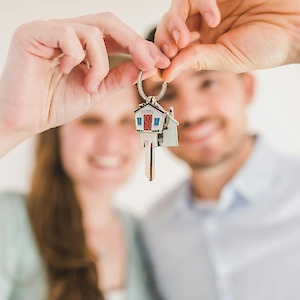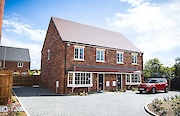


Content Writer

Mortgage Advisor & Director

If you’re looking for an economical way to purchase an energy efficient property, or improve the energy efficiency of your existing home, then a green mortgage could be right for you.
Here we take a look at green mortgages, how they could help you to save money, and how to go about getting the right type of green product to suit your needs.
What is a green mortgage and how do they work?
A green mortgage is any mortgage deal that is offered with an incentive to those who own, or want to own an energy efficient property. There are two main types available:
One to buy an energy efficient property
Usually with this type of product lenders will offer a larger loan, lower interest rates, or cashback on completion to those buying an energy efficient home that meets the individual ‘green criteria’ of that lender.
One to improve the energy efficiency of an existing property
This is often a remortgage or additional borrowing on an existing mortgage, to borrow money specifically for the purpose of making energy efficiency improvements to your home. This could include anything from replacing UPVC window and loft installation, to eco-pump heating system installation.
Green mortgages all have the same goal, but the terms relating to their incentives are quite varied. This could mean that you qualify for a green mortgage with one lender and not another. It’s a good idea to speak to a broker with experience in this area, like ourselves, if you’re interested in securing this form of finance.
Are they cheaper than regular mortgages?
Whether or not green mortgages are cheaper compared to traditional mortgages will depend on your circumstances. Typically, they have the most competitive rates a lender offers within their range, and some even offer 0% borrowing on additional borrowing.
It’s also important to keep in mind, however, that mortgage rates aren’t the only consideration when it comes to buying an energy efficient home. Opting for a home with a high EPC rating, whether that’s a newly built eco home, or through a series of improvements, could reduce your household bills in the long term.
How to get a green mortgage
In addition to the typical criteria applicable to every mortgage application, specific ‘green eligibility criteria’ apply to all green mortgage products. These vary by lender, but are generally based on the EPC (Energy Performance Certificate) rating of the property.
EPC ratings are a legal requirement for all residential property, and are based on a scale of A to G, or in some cases 0-100. It’s possible to get a new EPC rating assessment done if you plan to remortgage, and have made energy efficiency upgrades to your home since you purchased it. However, EPC ratings last for 10 years, unless you apply for a re-assessment.
Most lenders will be looking for an EPC score of A or B, or above 80. If you’re borrowing money to make energy efficient improvements, some lenders will base their interest rates on the eventual EPC rating, post-improvements.

Get bespoke advice about green mortgages
Which lenders are available?
In recent years, far more lenders have begun offering green products, with over half now offering some version of a green mortgage. Not all lenders offer green mortgages for investment use, however, with many focussed on traditional residential borrowers. Here are some examples of green mortgage lenders, and their related criteria:
-
Barclays has a ‘green home’ mortgage products to residential buyers, and is only available to those buying a new build home with an EPC rating of A or B, or above 81
-
Nationwide offers cashback for green purchase mortgages on properties rated A or B, or above 86. They also provide additional ‘green borrowing’ at 0% interest for the first 2-5 years on a fixed deal, at up to 90% LTV
-
NatWest Green mortgages provide a reduced rate on the purchase of A or B rated properties to both residential and Buy-to-Let customers, with borrowing up to 85% LTV. They may also offer cashback on top of this
-
Kensington’s ‘eKo mortgage’ offers cashback to those looking to improving their home’s energy efficiency, however you’ll need to raise the EPC rating by at least 10 SAP points within the first year after completion
-
Saffron Building Society offers a green mortgage known as the ‘2 year RetroFit’ which is aimed at people looking to improve energy efficiency. They retrospectively reduce the interest rate initially offered if you improve the EPC rating within 6 months
Pros and cons
As shown by the variety of products above, benefits vary depending on the type of green mortgage you choose, or are eligible for.
Advantages
The main pros of this type of deal are:
-
The potential for a more competitive interest rate
-
Cashback on some mortgage deals
-
The potential ability to increase your loan size, compared to what you could borrow for a non-green home
-
The potential for additional borrowing, sometimes at a reduced rate, to improve your EPC rating
-
The potential to benefit from a more competitive remortgage deal, once your energy efficiency improvements have been made
-
The potential to save money on your energy bills in the long term once you’ve bought an energy efficient home or made improvements to your existing home
-
The ability to ‘future-proof’ your property value, as it’s expected that energy efficient homes will be worth more than non-efficient homes in the future
Disadvantages
There are also some potential cons to consider:
-
Not all homes can be made energy efficient. In fact, Rightmove have quoted that around 1.7million UK homes would never be able to reach a C rating or higher, even with improvements, due to their original construction
-
Although the green tariff is usually the cheapest deal with any given lender, there may be cheaper deals available on non-green mortgages elsewhere - meaning it won’t always be your cheapest option. This is why it’s important to speak to a broker to help weigh up your options
Green buy-to-let mortgages

It is possible to get green buy-to-let mortgages, although there are fewer lenders offering them. The criteria are similar to residential green mortgage criteria, in that they are also based on the EPC rating of the property.
However, remember, as an investment buyer, having an energy efficient property can be even more beneficial. This could help you fall in line with any changes or upgrades to government-imposed EPC ratings, while also making your rental property more attractive to potential tenants.
Why choose Teito for your green mortgage?
At Teito, our knowledgeable mortgage advisers have a wealth of experience in securing green mortgages and can provide expert advice on energy-efficient home purchase and upgrades.
As whole-of-market brokers, we can help you to compare green mortgage deals with their non-green alternatives from over 90 lenders to ensure you’re getting not only the most competitive deal, but also the most suitable type of product for your needs.
Get started here to book in a free, no-obligation chat with a broker who specialises in green mortgages to find out what your options are.
FAQs
Yes, you can potentially get a green mortgage in Ireland, however, the energy efficiency of a property is measured differently to the Uk. In Ireland you’ll typically need a BER (Building Energy Rating) of 3 or above in order to qualify. Again, this varies by lender, so it’s a good idea to get in touch for further advice.
Choosing an Adviser
Selecting a qualified and experienced mortgage adviser is of great importance. To choose a suitable adviser, evaluate their qualifications, experience, and reputation, and ensure they are regulated by the Financial Conduct Authority (FCA).
Read reviews from previous clients and make sure they provide a clear explanation of the products and services they offer, as well as the fees and charges associated with them.


























































































































































